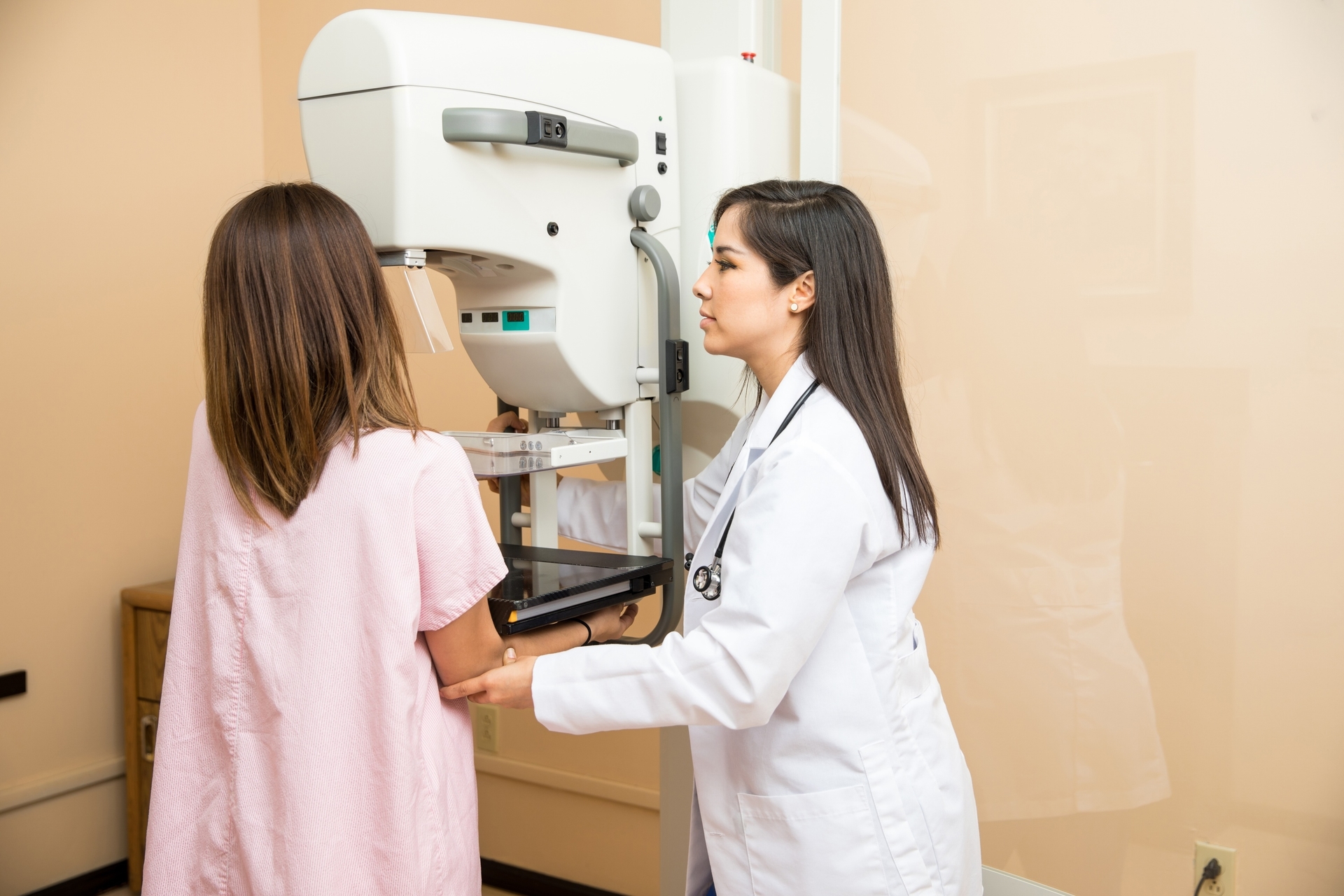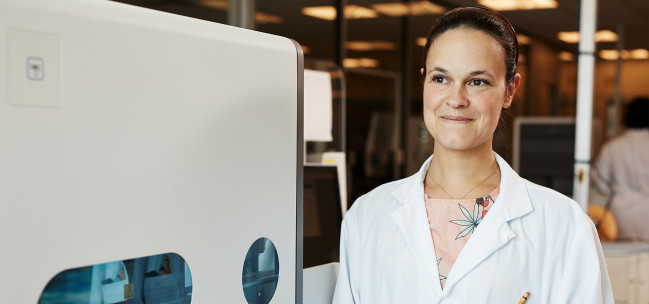Conventional, or 2D, mammography is an examination that lasts a few minutes and is performed by a radiology technologist. It involves taking at least two X-rays of each breast, one horizontal and one sideways, by compressing the breast for 10 to 15 seconds in order to obtain a high-quality image and reduce the amount of radiation emitted. There is no risk of trauma or injury, but the compression may cause some discomfort, sometimes even mild pain in some people.
Tomosynthesis, also known as 3D mammography, involves acquiring multiple images, separating the different depths of the breast and eliminating lesion-masking or overlay effects, using an x-ray tube that moves in an arc during the mammogram. The x-rays are then synthesized by computer to create 3D images of the breasts.
At Imagix, tomosynthesis is performed with all mammograms when deemed appropriate for the patient. These more accurate images reduce the need for additional or repeat examinations and improve breast cancer detection by 30 to 40 percent, particularly for small cancers that can be masked during 2D mammography due to overlapping tissue. This technology has been deployed throughout our network of clinics to provide state-of-the-art service to all our patients.

Screening mammography
Screening mammography is used to find breast cancer in healthy women. It increases the chances of survival by detecting breast structure abnormalities as early as possible. The Québec Breast Cancer Screening Program invites women between the ages of 50 and 74 to have a screening mammogram every two years.
Most Imagix clinics are designated screening centres for the Québec Breast Cancer Screening Program. In addition to conventional mammography examinations recognized by Quebec’s screening program, they perform tomosynthesis examinations to improve the detection of breast diseases.
Diagnostic Mammography
Diagnostic mammography is usually performed when a problem, such as a nodule, a discharge or changes in the skin or nipple, is detected by a health care professional (e.g., doctor or front-line specialized nurse practitioner) or the patient herself. A conventional mammogram or tomosynthesis is then performed on one breast (unilateral) or both breasts (bilateral) depending on the signs observed.
Unlike screening mammograms, which are performed at least one year apart, there is no time interval required for diagnostic mammograms.
Preparing for the exam (for adults)
The preparation is the same for conventional mammography and tomosynthesis. To facilitate the procedure and if your breasts are sensitive, you can schedule your examination 10 days after the beginning of your menstrual period. Some women have found that avoiding coffee, tea, chocolate and colas for two weeks before the exam can reduce discomfort.
To prepare for your mammogram, we will ask you to do the following:
- Avoid putting deodorant, powder, perfume or body lotion on your breasts and underarms. These products cause false images on the X-ray which can be mistaken for lesions.
- Put on a hospital gown and remove your jewelry and any metallic objects that may affect the quality of the images. Since you will be undressed to the waist, a two-piece outfit may be more practical.
- Notify the technologist if you have breast implants so that an appropriate work technique can be adopted.
A medical prescription is required to perform this examination. The cost of this examination is covered by the Régie de l'assurance maladie du Québec (RAMQ) at Imagix when prescribed by a physician.*
*Members of the College des Médecins du Québec (CMQ) registered in the Quebec Physicians Directory

